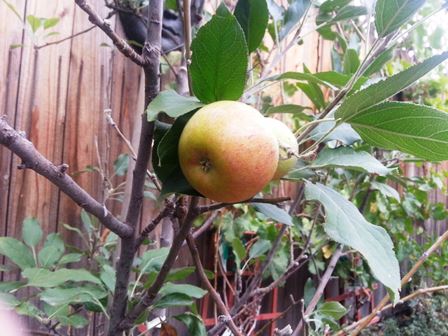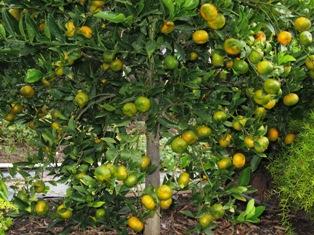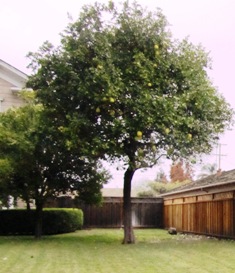Celebrating the Season of Apples
It’s that time of year when the scents of cinnamon and apple potpourri mingle with hot mulled cider. Thank you, Johnny Appleseed.
Or should I say, thank you, John Chapman (1174-1845). Born in Leominster, Massachusetts, Chapman planted apple orchards on lands in the northeastern and mid-western parts of the United States, returning after several years to sell those orchards after they were producing.
He also gave away many trees and seeds. But he didn’t believe in grafting, and the trees he planted bore apples more suited to cider. See, http://www.smithsonianmag.com/arts-culture/real-johnny-appleseed-brought-applesand-booze-american-frontier-180953263/?no-ist
It was John Chapman’s father Nathaniel–a farmer–who encouraged his son to become an orchardist. John planted more than a few orchards around the Midwest on lands he bought, owned, and sold. His life gave rise to the folk tradition of Johnny Appleseed. Today, there are many festivals that honor his life and work as well as a U. S. postage stamp.
Today, you don’t need a lot of land to grow an apple tree or two. Even a small piece of land can accommodate the fruit tree, thanks to the availability of dwarf and semi-dwarf varietals. Apartment dwellers and people who have limited space can even espalier an apple tree against a wall.
On the Henny Penny Farmette, we are growing the thin-skinned Cox Orange Pippin dessert apple, among others. This late-season varietal was first grown in 1825 in Colnbrook in Buckinghamshire, England. The flesh is orangey-red and the flavor is sweet and nutty. These apples can be eaten fresh, used in recipes, or made into cider.
If you have some cider on hand and would like to create the mulled apple cider flavor, add a couple of cinnamon sticks, a teaspoon each of whole cloves and allspice with a half-gallon of cider and heat in a saucepan. Add a little orange juice or some slices of orange. After simmering for 8 to 10 minutes, strain the mulled cider into mugs. Consider making a batch of farmhouse doughnuts to accompany the cider.
FARMHOUSE DOUGHNUTS
Ingredients:
1 pkg. yeast
1 cup lukewarm milk
1/2 teaspoon salt
31/2 cups flour
1/4 cup canola oil, plus oil for frying
1 cup brown sugar
2 eggs, well beaten
3/4 teaspoon nutmeg
Directions:
Mix together the yeast and milk in a small bowl.
Combine flour with salt in a large bowl.
Add the yeast and milk to the flour and salt mixture and beat well.
Let the mixture rise for one-half hour.
Add all the other ingredients and beat well again.
Let rise for one hour.
Punch down the dough. If it appears too soft to roll out, add more flour.
Turn the dough out onto a well-floured board and let the dough rest for ten minutes.
Divide the dough in half. Roll one section of dough out to 1/2 inch thickness and cut with a doughnut cutter. Repeat the process for the other half of the dough.
Let the doughnuts rise for about an hour; fry in oil at 360 degrees Fahrenheit. When the doughnut has turned brown, flip over. Take care not to burn.
Remove from doughnuts from hot oil and drain on paper towels.
Place doughnuts in a bag with granulated sugar and shake to coat. Makes approximately two dozen doughnuts and holes.
Pruning Sixty-Year-Old Citrus Trees
When a friend who owns a house in San Jose asked for help in pruning her citrus trees (a lime, satsuma mandarin, and a grapefruit) during the first weekend in December, we agreed. The house had a lovely stone courtyard with two large citrus trees that had remained prolific producers in spite of being neglected for the last 20 years. The trees had been planted, she told us, approximately 60 years ago by an aunt.
Standard size citrus trees can reach 20 to 30 feet and spread almost as wide. Dwarf citrus, however, only reaches four to ten feet. The latter can be grown as landscape specimens or in pots where they can be easily moved around to protect them from frost and wind. In really hot, dry conditions, citrus in pots may need daily watering.
Once in San Jose, we checked the trees for diseases and pests. Aside from some of the lime leaves that had turned yellow, suggestive of too either much water or iron chlorosis (simply corrected with a little iron sulfate or chelated iron), the trees otherwise looked pest-free and loaded with ripe fruit.
Wearing gloves and long sleeves to protect against thorns, we shook the trees vigorously to remove unpicked fruit of previous seasons and the current season’s ripe fruit. The shaking yielded a five-gallon bucket and two partially full contractor bags of delectable limes and satsuma mandarins. The owner was delighted to have so much fruit. She even offered us some to make into marmalade, but we explained we had plenty of our own citrus on the farmette.
We carefully pruned out all the old dead branches and began shaping the trees, lifting and cutting branches that pointed down, removing crossed-over limbs, and cutting away branches that compromised the courtyard fence. Our work reduced the height and width of the trees (making it easier to harvest any fruit still hanging).
The work went smoothly. We even had time to tackle the ragged-looking grapefruit tree in the back. By the end of the day, we had freed three beautiful trees from a tangle of dead limbs and picked many pounds of fruit. The trees were once again serving the purpose for which they were planted–heavy producers that enhanced the beauty of the landscape.
 Facebook
Facebook Goodreads
Goodreads LinkedIn
LinkedIn Meera Lester
Meera Lester Twitter
Twitter







